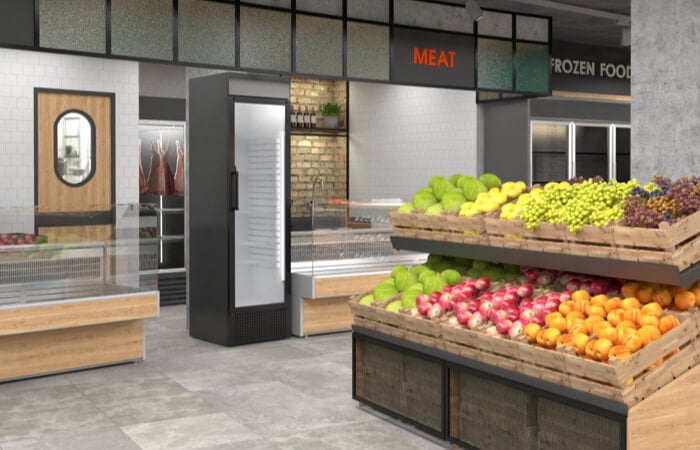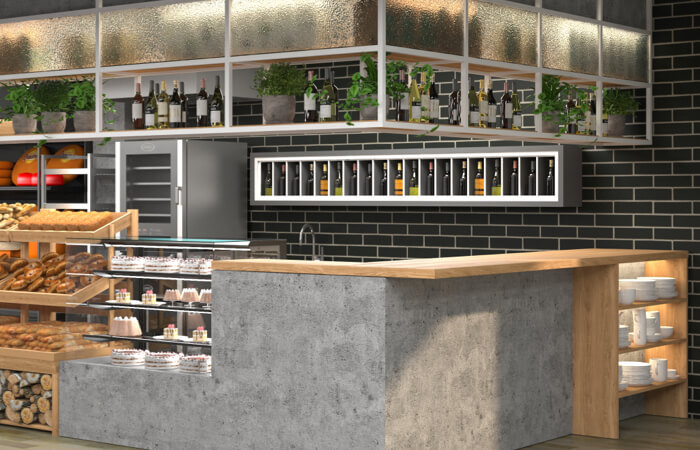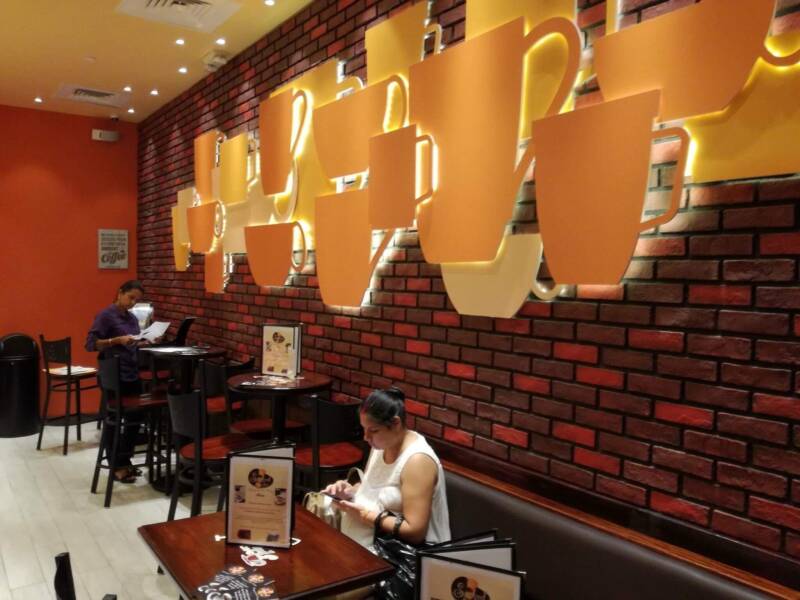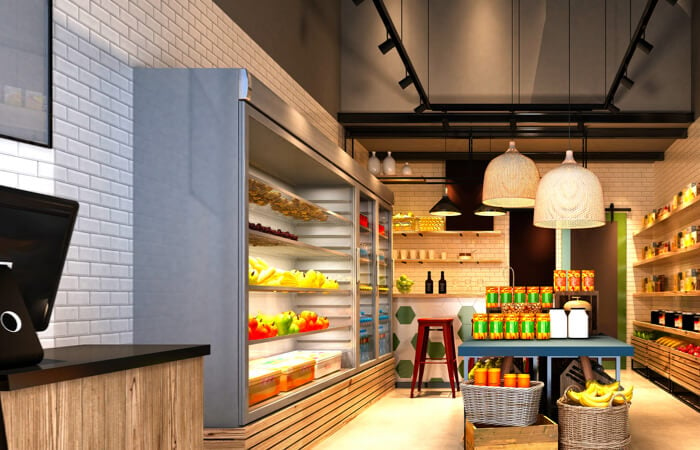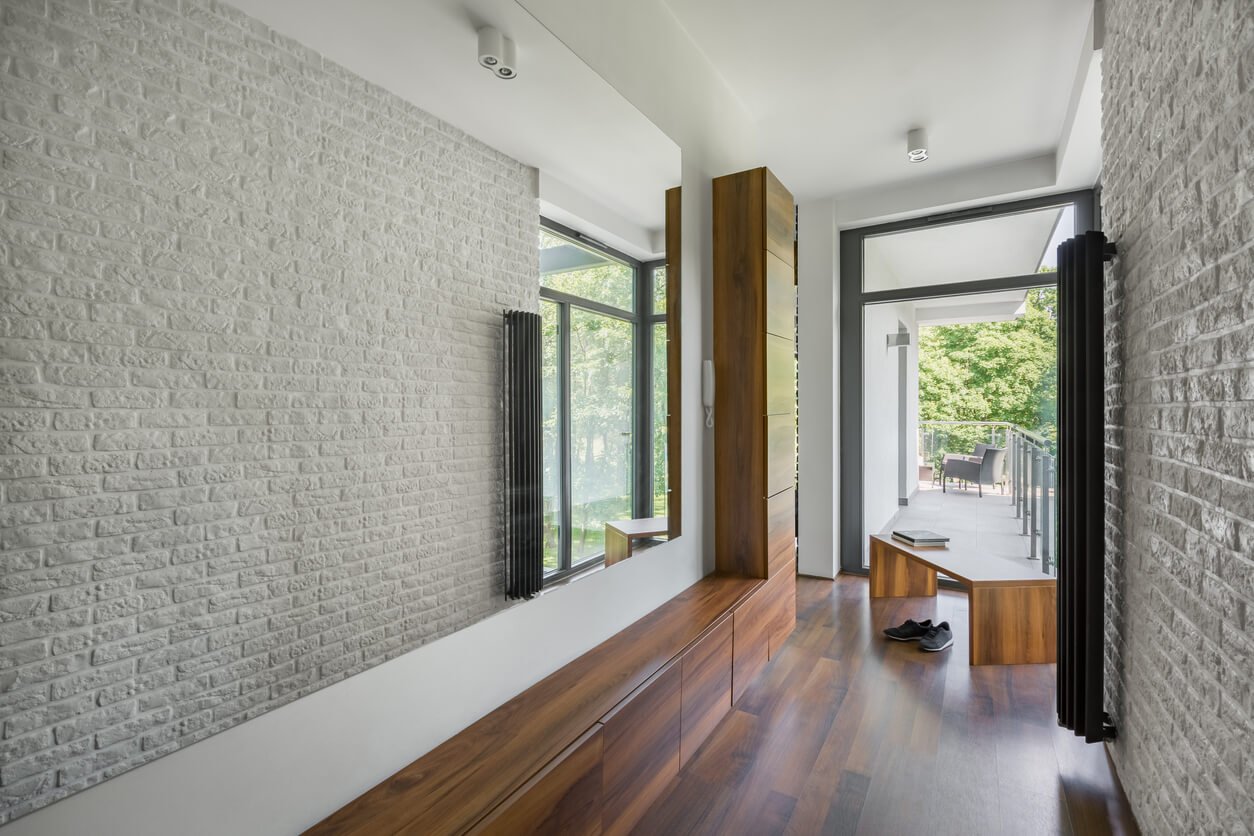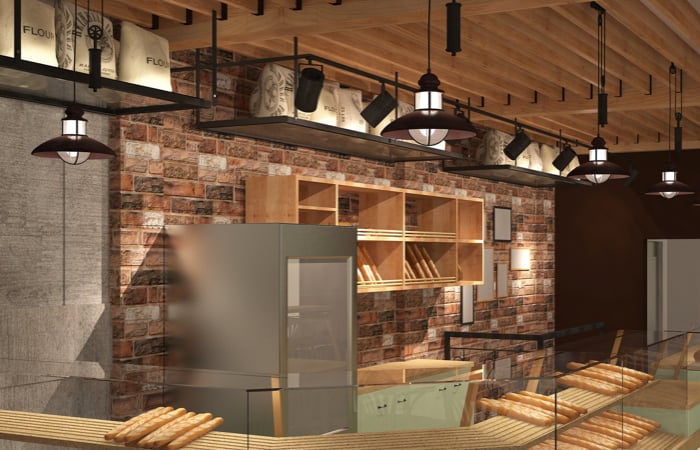
When it comes to grocery store layout strategy, there are many techniques designers can use to create environments that provide efficient and positive shopping experiences for customers. These designs rely on everything from interior design elements to music choice in order to increase customer satisfaction, which is important as 69% of people choose to do their weekly shop in-person.
So what can you do to make your grocery store a customer-friendly space? The following seven supermarket design ideas are a great place to start.
Grocery Store Layout Strategy
One of the most important steps along the path to opening a new supermarket location is determining how the shopping area — the store’s aisles and departments — will be arranged. During this part of the process, retail designers need to keep more than the customers’ needs in mind, but also take the store’s goals (sales) into account. By making certain choices about the future supermarket’s layout, the design team can help boost profits once the doors open for business.
Some of these choices include:
- Locating sensory departments (such as the bakery or prepared foods departments) near the store’s entrance
- Ensuring that customers can see a well-stocked produce section once they’ve entered the store, as this creates a strong first impression of freshness
- Placing staples such as milk, eggs and bread farther away from the entrance to encourage shoppers to pass through other departments
- Taking advantage of shelf levels when stocking grocery items — keeping best sellers at eye level, more gourmet items on the top shelf and generic or store brand items on the lower shelves
7 Customer-Friendly Supermarket Design Ideas
When retailers — including supermarkets — create positive customer experiences, shopper satisfaction increases. And happy customers are good for business. Studies show that increased satisfaction not only has a positive effect on customer spending habits but on brand loyalty and the likelihood that shoppers will recommend the business to others as well.
So, how can you reap these benefits in your own grocery store? Create a shopping environment that puts customers first. If you’re not sure how to begin, these seven tips are great starting points:
1. Create a welcoming entrance
The entrance to your store is the first opportunity you have to make a good impression on your customers. Give shoppers a preview of what’s inside by displaying seasonal items, such as flower planters in the spring or pumpkins during autumn, outside the main doors. Inside the vestibule, provide shoppers with what they’ll need to complete their shopping. Carriages, baskets, extra copies of the weekly specials flier and sanitizing wipes should all be offered here.
2. Incorporate elements of interior design
Using interior design principles to create balanced, and visually appealing spaces inside your grocery store can help give the impression of quality and harmony — putting customers at ease. Color choice also plays an important part in creating a pleasant atmosphere for shoppers. Warm colors evoke feelings of coziness while cool hues help promote a sense of freshness, and both can be used to your advantage in different departments. Consider yellows and reds in your bakery area and greens in the produce aisle.
Natural touches throughout the store can also help achieve a relaxing shopping environment. Use faux bamboo, wood or slate wall panels to get the realistic look you want without the high price tag that comes with the traditional materials.
3. Keep traffic flow in mind
There’s nothing quite as frustrating as traffic jams, whether they occur during a commute or while cruising through the supermarket aisles. To keep the flow of shopping carts uninterrupted, it’s crucial to provide maximum aisle width on the grocery store floor and ample space in the check out area. During busier times, lines at the registers can back up and block the paths of those who are still shopping, which is why it’s important to build plenty of room into your grocery store designs.
4. Add leisure spaces
Modern supermarkets are increasingly becoming much more than just a place to stock up on essentials. Extra amenities such as cafes, prepared food areas, sushi stations and gourmet cheese counters are commonplace in newer grocery store layouts. While some customers might prefer shopping with a latte in hand, others may want a place to sit and enjoy what they’ve purchased from these specialty shops. To make this possible, consider adding a seating area to your floor plan.
5. Set up a dedicated area for online orders
In recent years, supermarkets have seen an increase in the popularity of online ordering. As the demand for eGrocery shopping services grows, it’s essential that stores ensure an efficient process, from order placement to pick up. Set aside a designated holding area for orders that are ready to be collected. To make pick ups quick and easy for customers, locate this space as close to the store’s main entrance as possible.
6. Embrace signage
For many shoppers, one of the main goals of a visit to the supermarket is to get in and out as quickly as possible. To help customers achieve this, make sure you provide ample signage throughout the store. Sufficient wayfinding makes it much easier for people to find what they need without spending too much time looking for where items are located.
7. Consider overall ambiance
Many factors contribute to the general ambiance of your store. Consider your lighting choices — a brightly lit interior helps to create a welcoming atmosphere as well as make it easy for customers to see your product. The music you choose to play also has an impact. Slow-tempo tunes are both pleasant to listen to and encourage customers to slow down and take their time as they shop. Additionally, incorporating areas of textural interest with faux wall panels throughout the store can help elevate interior designs.
Elevate Your Grocery Store Design with Texture Plus
When done well, grocery store layout strategy offers benefits for both your supermarket’s bottom line and your customers’ shopping experiences. Focusing on customer needs as well as the look and feel of your store during the design process will pay off once you open the doors for business.
Ready to explore options for enhancing your supermarket’s interior design? Texture Plus has more than 1,000 designs of faux wall paneling to choose from. Browse our selection of products or contact us if you have questions about how you can use faux wall panels in your store.
